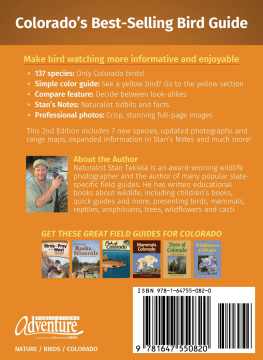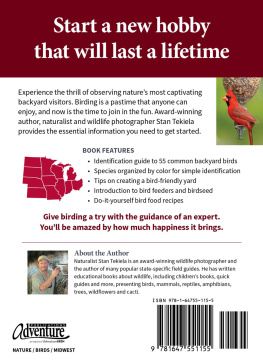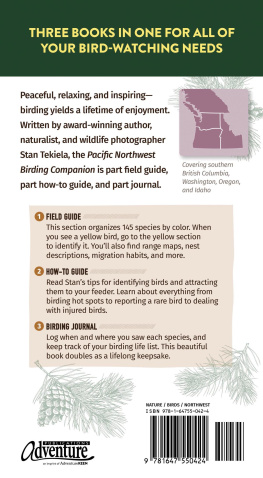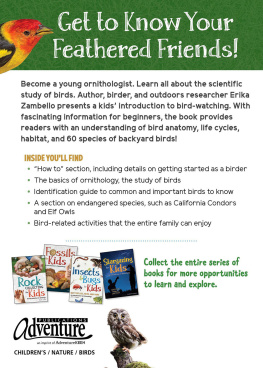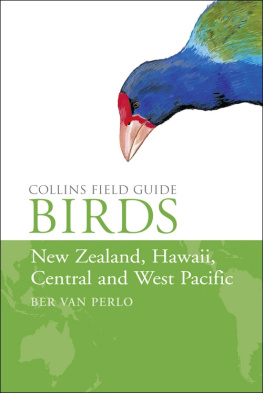Thomas P. McElroy - The Habitat Guide to Birding
Here you can read online Thomas P. McElroy - The Habitat Guide to Birding full text of the book (entire story) in english for free. Download pdf and epub, get meaning, cover and reviews about this ebook. year: 1974, publisher: Knopf, genre: Romance novel. Description of the work, (preface) as well as reviews are available. Best literature library LitArk.com created for fans of good reading and offers a wide selection of genres:
Romance novel
Science fiction
Adventure
Detective
Science
History
Home and family
Prose
Art
Politics
Computer
Non-fiction
Religion
Business
Children
Humor
Choose a favorite category and find really read worthwhile books. Enjoy immersion in the world of imagination, feel the emotions of the characters or learn something new for yourself, make an fascinating discovery.

- Book:The Habitat Guide to Birding
- Author:
- Publisher:Knopf
- Genre:
- Year:1974
- Rating:5 / 5
- Favourites:Add to favourites
- Your mark:
- 100
- 1
- 2
- 3
- 4
- 5
The Habitat Guide to Birding: summary, description and annotation
We offer to read an annotation, description, summary or preface (depends on what the author of the book "The Habitat Guide to Birding" wrote himself). If you haven't found the necessary information about the book — write in the comments, we will try to find it.
The Habitat Guide to Birding — read online for free the complete book (whole text) full work
Below is the text of the book, divided by pages. System saving the place of the last page read, allows you to conveniently read the book "The Habitat Guide to Birding" online for free, without having to search again every time where you left off. Put a bookmark, and you can go to the page where you finished reading at any time.
Font size:
Interval:
Bookmark:
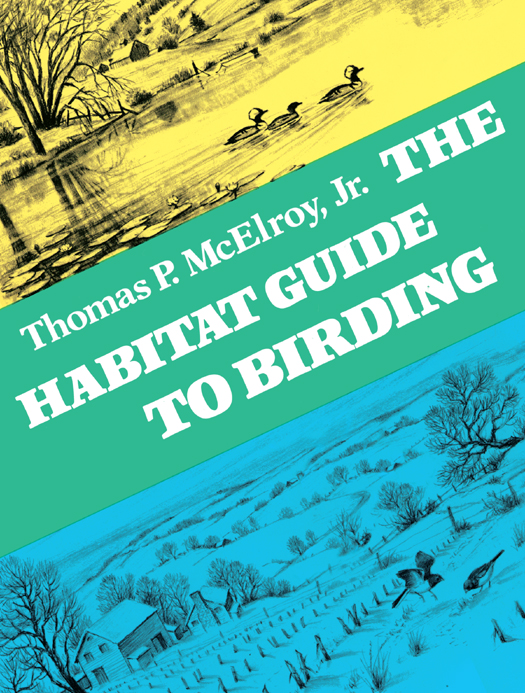
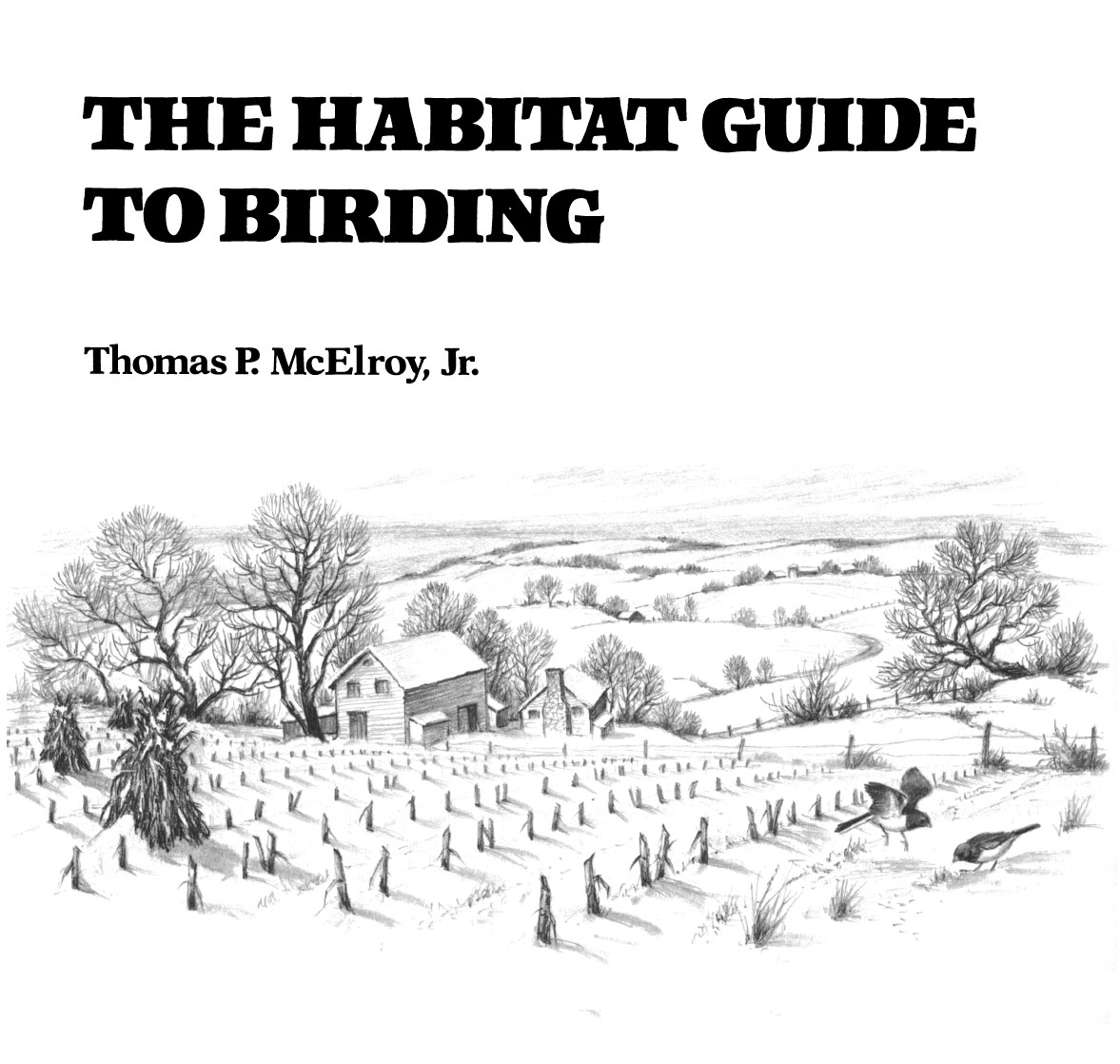
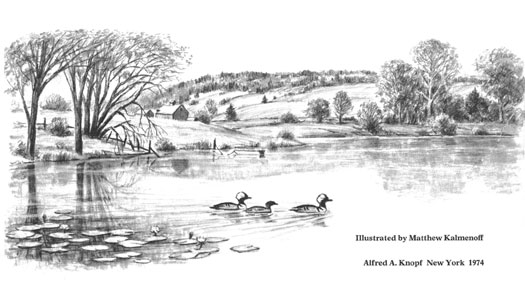

This is a Borzoi Book published by Alfred A. Knopf, Inc.
Copyright 1974 by Thomas P. McElroy, Jr.
All rights reserved under International and Pan-American
Copyright Conventions. Published in the United States
by Alfred A. Knopf, Inc., New York, and simultaneously in Canada
by Random House of Canada Limited, Toronto. Distributed by
Random House, Inc., New York.
eBook ISBN: 978-0-307-82808-8
Library of Congress Cataloging in Publication Data
McElroy, Thomas P. (date) The habitat guide to birding.
1. Bird watchingUnited States. I. Title.
QL682.M33 1974 598.20730973 739945
ISBN 0-394-47492-9
v3.1
To Tommy and Wendy
and grandchildren everywhere, with
the hope that they, too, may
thrill to the flight of the eagle,
know the beauty of the cardinal,
and revere the cathedral tones
of the wood thrush.
Waterthrush
Arctic Tern and migration routes
Life zones: Snow Buntingalpine; Pine Grosbeakconiferous; Acadian Flycatcherdeciduous; Meadowlarkgrassland; Scaled Quaildesert
American Bittern
Pied-billed Grebe and nest
Bills for specific purposes: Long-billed Marsh Wren, Black and White Warbler, Goldfinch, Grosbeak, Crossbill, Shrike
Wood Thrush
Ruffed Grouse
Forest food chain: Sharp-shinned Hawk, Black-billed Cuckoo, caterpillar, leaves
Hooded Warbler
American Redstart
Diagram of woodpeckers tongue
Downy Woodpecker
Red-tailed Hawk, Barred Owl
Blackburnian Warbler
Black-throated Green Warbler and hemlock; Pine Warbler and white pine
Red Crossbill
Black-backed Three-toed Woodpecker
Kirtlands Warbler and jack pine; Magnolia Warbler and spruce
Eastern Meadowlark
Bobwhites
Horned Lark
Killdeer: broken-wing act
Vesper Sparrow
Predacious birds hunting the same terrain: Marsh Hawk, early; Short-eared Owl, late
Yellow-breasted Chat
Cedar Waxwing
Indigo Bunting
Brown Thrasher
Eastern Bluebird
American Goldfinch
Ring-necked Pheasant
High, airy perchers: Tree Swallows on utility wires; Sparrow Hawk on isolated stub
Common Crows
Hooded Mergansers
Common Loons nesting
Little Blue Heron
Bald Eagle family: female and young; male
Wood Duck
Belted Kingfisher
Sora Rail
Dowitcher
Virginia Rail and chick
Feet adaptations: Heron and Duck; Woodpecker, Robin, and Osprey
Red-winged Blackbird
Mallard Ducks in takeoff and flight
Surf Scoters
Herring Gull in seasonal plumage: summer (in flight); winter (standing)
Great Black-backed Gull
Gannets
Common Puffins
Wilsons Petrels
Laughing Gulls
Wood Ibis
Everglade Kite
Common Egrets
Brown Pelican
White Ibis, mangroves
Garden birdbath
Baltimore Oriole and nest
Ruby-throated Hummingbirds: feeding and in courtship display
Phoebe and nestlings
Mockingbird: wing flashing
Slate-colored Juncos
Black-capped Chickadee at pine cone feeder
Evening Grosbeak at hopper feeder; Downy Woodpecker at suet feeder
White-breasted Nuthatch and Tufted Titmouse; Cardinal, Purple Finch, and White-throated Sparrow
Golden-crowned Kinglet
Black-crowned Night Heron
Great Horned Owl
Barn Owl and Screech Owl; Barred Owl
Common Nighthawk
Long-billed Marsh Wren and Lesser Yellowlegs
Hawks mountain sanctuary
Sighting with binoculars
Catbird
Eastern Meadowlark and nest
Commercial blind; sporting blind and decoys
Scarlet Tanager
Snow Geese
The sudden realization that man is inherently dependent upon the related functions of the natural community has, in part, initiated a great resurgence of interest in all outdoor activities. People are searching for fundamental truthsthe basic laws of survival and their meanings in terms of human welfare and happiness. Some seek answers in the remoteness of the backcountry; others must challenge the beckoning peaks of high mountains; and others find a degree of solitude in plying wilderness waterways. But for many, the most meaningful rewards are found in following the lives of birds, for birds have represented the enduring qualities of life since eons past.
Although I have been interested in birds since childhood, I must admit that I find it somewhat difficult to pinpoint those qualities which sustained my interest over so long a period. Perhaps I was content, in those formative years, to add a new bird to my list, to know where the oriole or kingbird nested, to thrill at the swift flight of a hunting hawk, and to find solace in the bell-like tones of the thrushes as I returned from my woodland wanderings. The birds were there, and I was content to have them as my daily companions.
Even in this most casual form of acceptance, bird watching was a deeply satisfying experience. In more recent years, however, I have become increasingly aware of more significant attributes to be found in observing wild birds in their natural habitats. Also, the dimension of concern has been added; birds are recognized as the earliest and truest indicators of environmental change. I am not alone in these discoveries, for there is a growing human force, informed and inquisitive, whose intellect cannot be satisfied by the mere facts of existence alone. This is especially true relative to the comparatively new science of ecology. Where the relationships of life and environment are involved, this new force demands positive answers. In the case of bird watching, it is no longer sufficient to say the wood thrush is a brown speckled bird of the forest. Why is it there? How does it survive? What does it contribute to the total forest community? The answers to such indicative questions carry the bird watcher beyond the staid practice of merely listing recognized species.
Recognizing these facts, this book, then, is manifold in purpose. Primarily, its intent is to improve ones skill and to increase ones pleasure as a birder. The pursuit of these objectives is through an innovative approach to the whole field of bird watching: that birders can be helped in locating, identifying, and understanding birds through a knowledge of their physical adaptations and behavioral patterns as associated with the habitats in which they live. Also, this book is based on the premise that birds are an important functional unit in the total natural community, and that through the understanding of these functions and the community, the birder can pursue his interests with a keener knowledge and find greater personal rewards.
Font size:
Interval:
Bookmark:
Similar books «The Habitat Guide to Birding»
Look at similar books to The Habitat Guide to Birding. We have selected literature similar in name and meaning in the hope of providing readers with more options to find new, interesting, not yet read works.
Discussion, reviews of the book The Habitat Guide to Birding and just readers' own opinions. Leave your comments, write what you think about the work, its meaning or the main characters. Specify what exactly you liked and what you didn't like, and why you think so.

